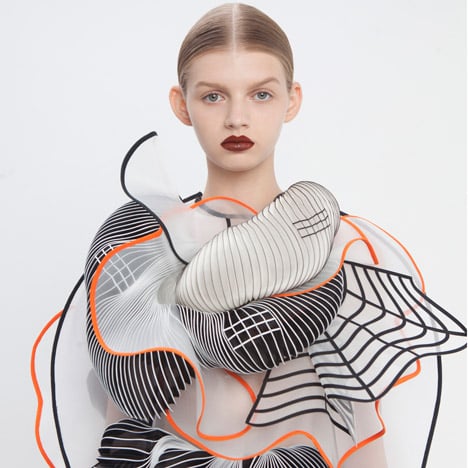
Noa Raviv combines grid patterns and 3D printing for Hard Copy fashion collection
Israeli fashion designer Noa Raviv has integrated 3D-printed elements into ruffled garments influenced by distorted digital drawings.
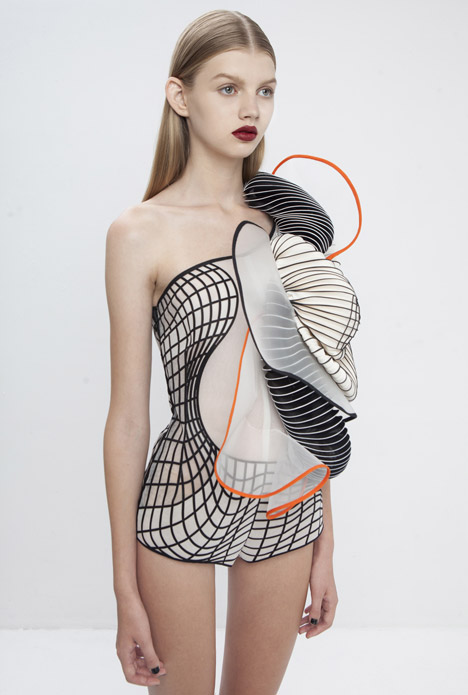
Noa Raviv printed and stitched lines and grids onto fabrics to evoke images of corrupted 3D drawings made using computer modelling software.
"While working on a 3D software I was fascinated by the grid shown on the 2D screen and by the way black repetitive lines defines voluminous objects," Raviv told Dezeen.
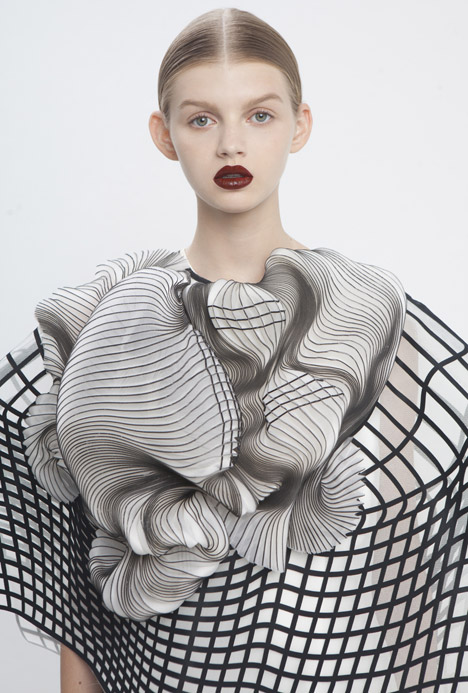
"I've translated those lines into textiles that creates this sort of optical illusion."
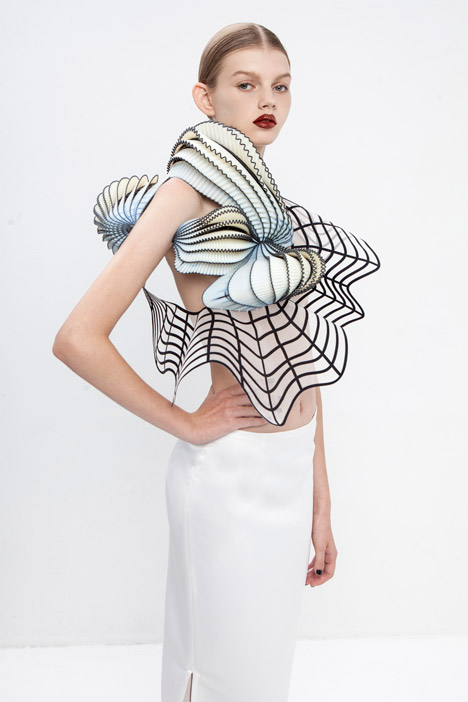
Tulle and silk organza fabrics in black, white and sheer tones are layered, ruffled and pleated into voluminous shapes.
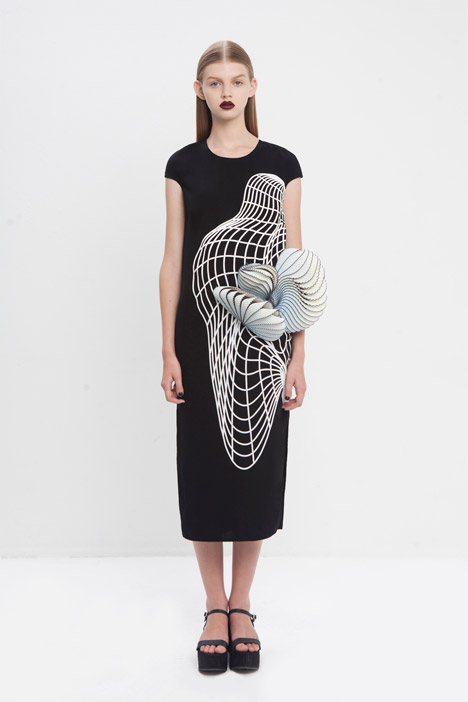
These embellishments snake over the shoulders and cover the chests of the dresses. "I chose the materials that had the most innovative look and the ones that I thought would best fit," Raviv explained.
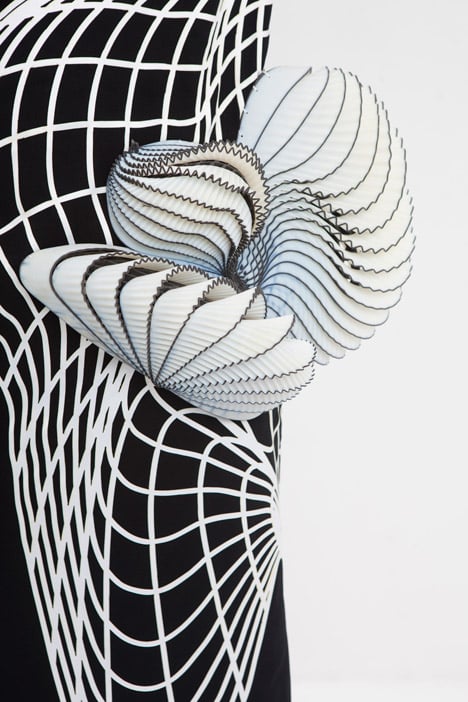
Grid-like patterns are warped and stretched across parts of the garments to create optical illusions across the body.
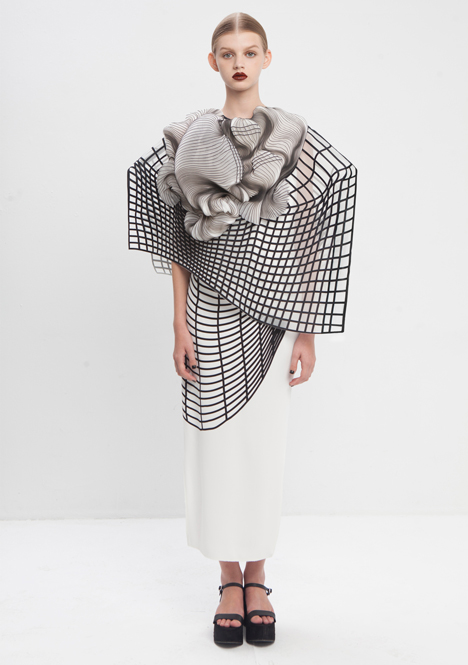
Two 3D-printed pieces, formed from ribbed layers of polymer, were created on a Stratasys Objet Connex multi-material machine.
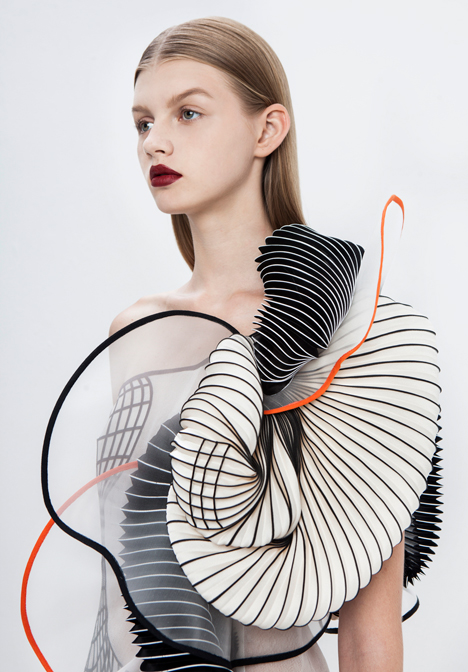
These were stitched to the shoulder of a translucent backless top and on the waist of a calf-length black dress.
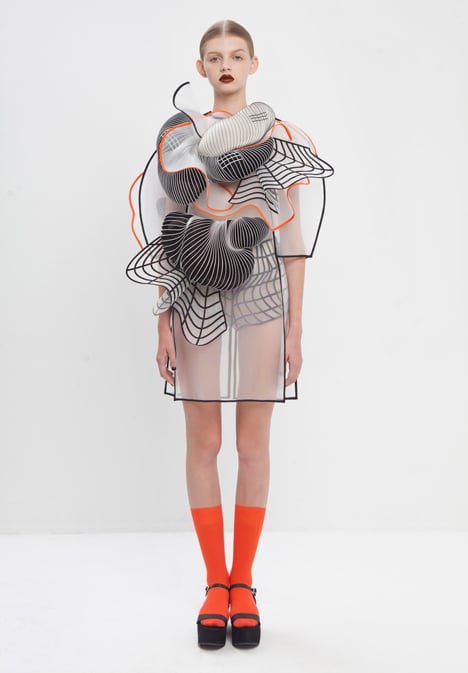
Raviv used the shapes of broken Greek and Roman marble sculptures to inform the asymmetric silhouettes. "The silhouettes were influenced by classical sculptures, which were the point of departure for creating the collection," she said.
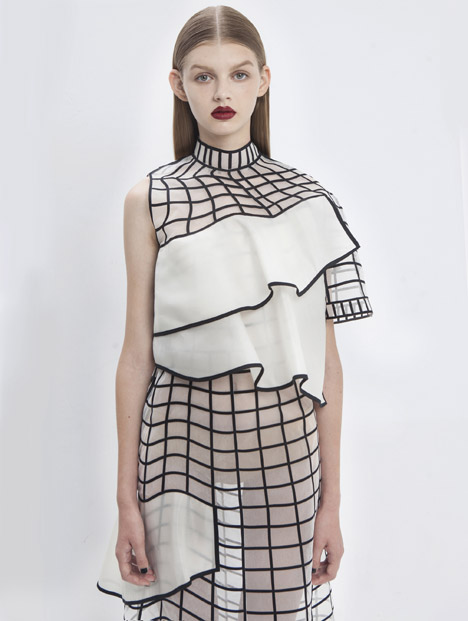
"Those sculptures are rarely found unbroken, thus the shapes and patterns of the collection are mostly non symmetrical and has a sort of distorted or fractured look."
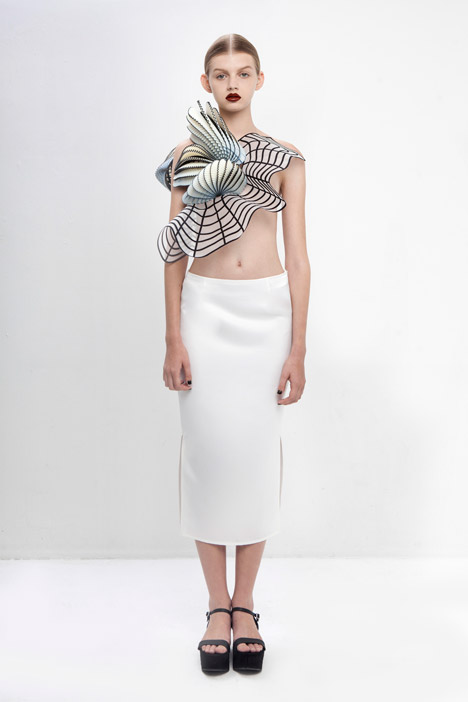
The monochrome collection is peppered with details in orange, used to edge sections of fabric or chosen as the colour for socks. "In the 3D software I worked with there is a feature that marks the edges of an object with a selected colour," Raviv said.
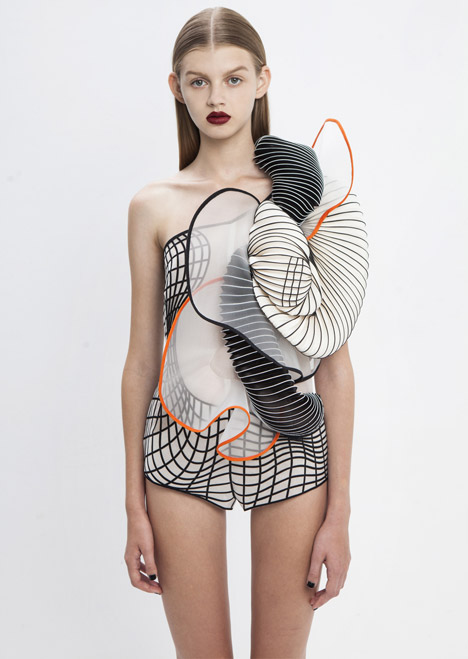
"This feature helps to spot errors and I used to work with a bold shade of orange. Therefore I thought it would be nice to bring that shade of orange into the collection."
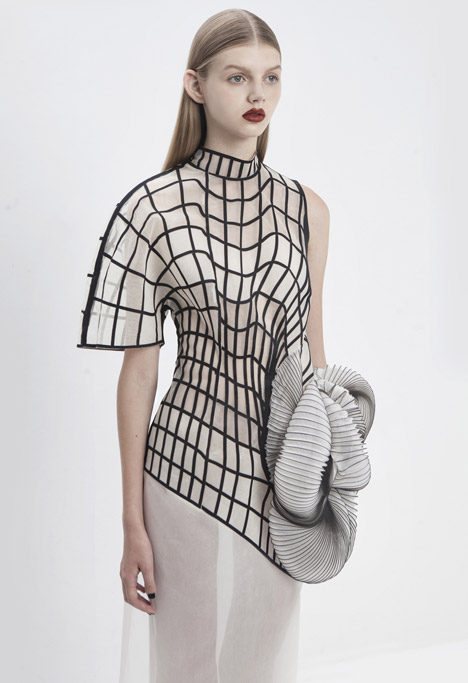
Black lines are used to edge the white and translucent pieces, while white is used to detail black material. Plain white and sheer skirts provide a contrast to the exaggerated patterned tops.
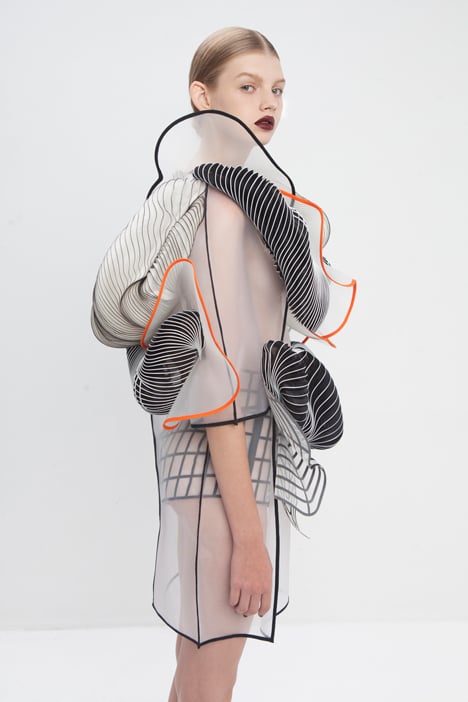
Photography is by Ron Kedmi.